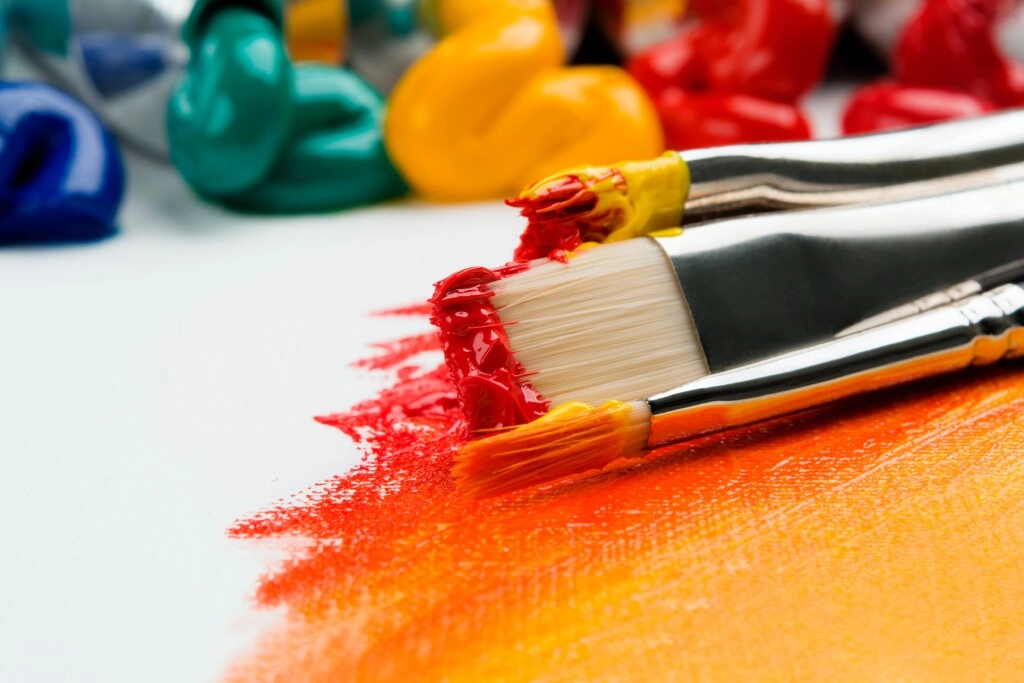Painting is one of the arts that has always had its fans. Everyone chooses a special way to paint. Methods such as watercolor, ink painting, black pen and oil paint.
At the beginning of the 15th century, oil painting became known and popular as an art. Famous painters such as Van Gogh, Frida, Picasso, Michelangelo and Da Vinci also have oil paintings in their works. Today we are going to have an exciting journey in the world of oil painting and its techniques.
Let’s go!
What is oil paint?
Oil paint is one of the painting tools that dries in the natural environment and in the open air, its drying process is very slow and it consists of paint, glue and solvent. In fact, during the Renaissance, there were merchants known as “men of color.” They sold powdered pigments in the market. Later, these pigments were mixed with adhesive oils such as linseed oil and created oil paint. You can also use oils such as sunflower oil and walnut oil.
If your specialty is drawing with colored pencils, this article can help you!
Advantages and disadvantages of using oil paint
In order to decide whether oil paint is the right tool for your painting or not, it is better to know its advantages and disadvantages.
Advantages of using oil paint
- Oil-based paint, such as oil paint, can be used for multi-layer paintings. Because they can be diluted.
- Because the drying process of oil paint is slow, works of art can be changed and termed gradually.
- The techniques of using oil paint are much more than other color tools.
- Compared to its counterparts, oil paint is resistant and durable. Also, the colors are rich and deep, that’s why they blend well together.
Disadvantages of using oil paint
- The pungent smell of oil paint may cause allergies in some people over time.
- Oil paints are much harder to remove from surfaces and painting tools, and spilling them on clothes causes stains.
- If you are in a hurry to get the final result of the painting, oil paint is not the right choice. Because it dries for a longer time.
- It is difficult to modify colors in mixed oil paints.
Oil painting techniques
To have an oil painting masterpiece, you need to pay attention to several techniques:
1. Keep your brushes clean
Keeping the brush clean will make your colors pure and not stained. Because it is very important to maintain the natural color of the paint in painting. So always keep your brush clean even between strokes.
2. Hold your brush correctly
A painter can hold his brush in many ways. But for maximum control over the painting, try to hold the end of your brush so that you have more control over the pen.
3. Master your brush
Do not forget that your brush has two directions and you can use both directions while painting. In fact, you shouldn’t force yourself to use only one part of the brush. Using different brush directions will help you paint faster and more versatile.
4. Be careful how much pressure you apply
Avoid applying too much pressure to your brush. Because the more you press your hand, the more your colors will blend together. In fact, by changing the pressure, you can create different textures.
5. Mix colors as needed
A small inconsistency in the first color combination leads to the attractiveness of the color. So, mix colors as you need. Because combining too many colors may turn a beautiful composition into a boring one.
6. Use two colors as much as possible
If you choose fewer colors to mix (at least two), your color will be more natural and vibrant. The more colors to combine, the more dull the resulting color will be.
7. Do not neglect the palette knife
A palette knife is not only useful for mixing colors. Rather, you can use it in some cases to create harmonious textural strokes. In this way, the textures you will create with a palette knife are not similar to the textures you create with a brush.
8. Try different techniques oil paint
You can use colors on dry colors or on wet colors or do the so-called wet-on-wet technique like Van Gogh. This technique is very useful for placing a color gradient on your canvas.
Last words
Working with oil paint and mastering its techniques can seem overwhelming. But with the simple techniques that I have given you in this article, I hope that you can help you with your first oil painting. Because these techniques give your painting another life.

